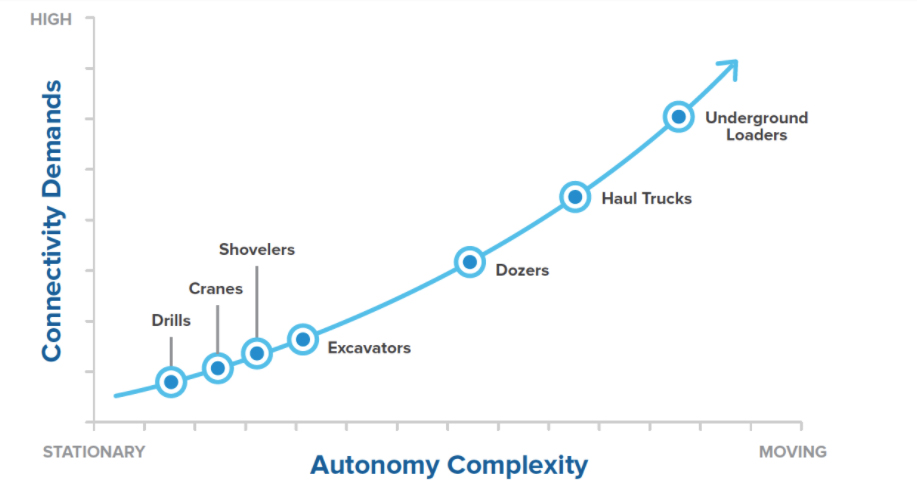The world has come a long way since two-way radio communication was introduced to mining operations. Back then being able to have a stable and clear conversation with a colleague in a remote or underground location was (and in some ways, still is) a huge step. Since then, the advent of WiFi has had an equally seismic impact on operations and more recently we have the arrival of private LTE networks – promising cell phone coverage throughout, regardless of environment.
There are clear production and safety benefits to having reliable voice communications in any operation, but what about all these bandwidth-intensive technologies entering the mining space? There’s autonomous machinery, IoT widgets and big data analysis, all promising huge savings and safer working conditions. But they all require wireless connectivity far beyond what traditional low-frequency bands can provide. In some settings, WiFi is capable of providing high bandwidth, low latency communications, with the ability to run multiple applications at the same time.
So, which medium suits your mine site best? And within that medium, what is the appropriate propagation model to employ? Whatever you install today runs the risk of being obsolete within a short space of time, so how do you balance your immediate needs and budget while future-proofing your choice in technologies? To give you a better understanding of the communication requirements for what the future will bring, let’s consider autonomous equipment, and look at the following:

- Credit to Rajant for above graph (from our friends at Rajant Networks)
The more sophisticated the application, the greater the demand on the network, and that’s just for a single application. When you start deploying multiple applications with increasing demands on the network, the risk of overloading the system and causing a standstill increases dramatically.
While the above represents the more extreme side of bandwidth-hungry technology, consider the evolution of a previous ‘hard-wired’ standard. In those terms, today’s technology has far outgrown what was standard just a decade ago. Today’s innovators understand that an ideal comms environment rarely exists in mining and they’re still working tirelessly to develop bandwidth frugal products that can deal with the inevitable breaks in coverage or a crowded network.
When it’s all said and done, there’s no one-size-fits-all comms solution. WiFi is good for single, non-moving applications whereas a MESH network is helpful to ensure reliable handover for mobile applications and add extra reliability to ensure your data packets find their way to the intended destination. LTE networks are equally powerful for voice and data communications and provide the bandwidth and ‘Quality of Service’ to ensure vital systems are always able to communicate.
All communication backbones have their specific benefits and, equally, all have their limitations – mostly driven by local conditions. What is always easy to agree is, a mine’s communication infrastructure is critical to realising the true value of the deployed technology.
At Ramjack, we spend our time getting to understand your local conditions and requirements; this puts us in a position to recommend the solution(s) that are right for you, both today and tomorrow…

